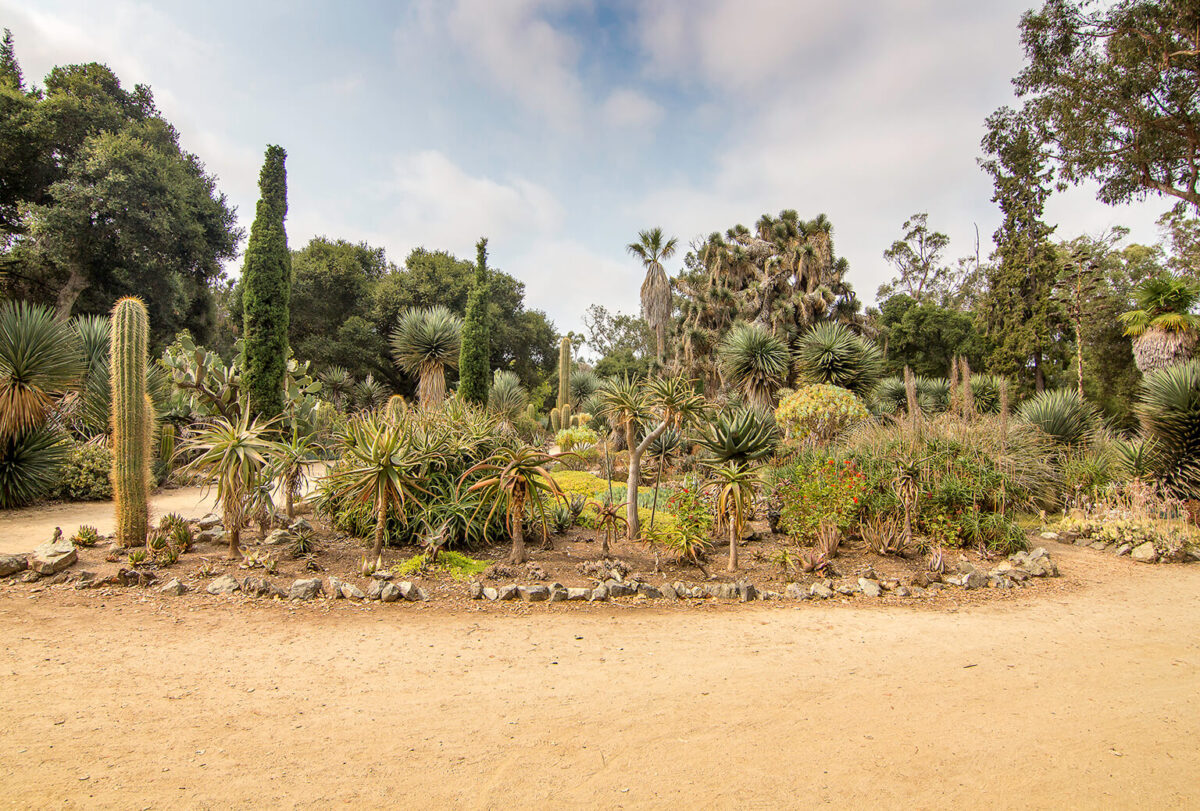Words by Bob Siegel
Largely hidden from view, but easily accessible, the Arizona Garden is a floristic and photographic gem on the Stanford campus. Filled with flamboyant flowers in a vivid palette of colors, with points and swirls, weird shapes and curious symmetries out of some Seussian dream, the garden is a wonderful spot for an early morning photo shoot, a midday picnic with a friend or an afternoon contemplation.
Fence lizards, rabbits and squirrels scurry among the undergrowth. Perching birds and woodpeckers flit and chirp among the trees, and hummingbirds steal cactus threads to line their tiny nests. A redtail hawk calls nearby. A closer look reveals a multitude of insects and other small creatures pollinating the flowers, priming the soil and seeking safe haven.
A series of symmetrical paths demark the individual beds. In addition to myriad species of cactus, there are many other botanical curiosities—yuccas and agaves, aloes and jade plants, silk floss and coral trees, aeonium and spurge, palo verde and a boojum tree.
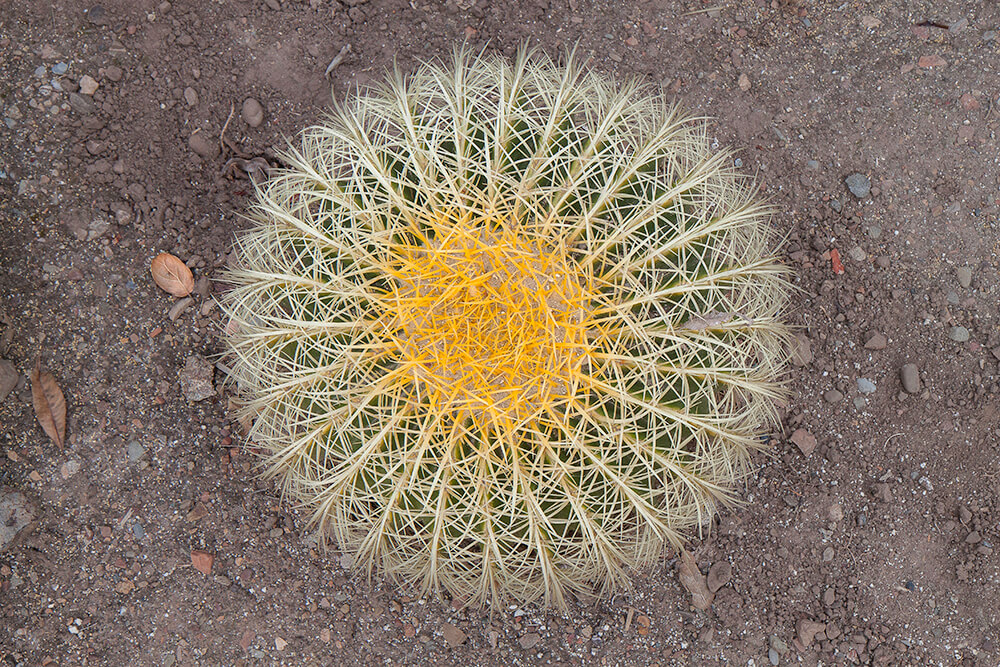
Predating the University, the garden was designed by landscape architect Rudolph Ulrich in the early 1880s. Although the name evokes our neighboring state, Arizona Garden refers to the drought-tolerant plants that are found there. Indeed, while some of the plants are native to the state of Arizona, others come from distant continents with similar climes. For much of the 1900s, the garden fell into disrepair. Restoration in the 1990s continuing to the present has revived the garden to its current vibrancy. Arizona Garden coordinator Christy Smith works hard to maintain the garden with the help of students and community volunteers.
For those who have more time, the Stanford Mausoleum, Angel of Grief statue, Stanford Arboretum and Cantor Museum are other nearby points of interest. Even a short stop at the garden is worthwhile. So, come wander… and take in all the wonders.
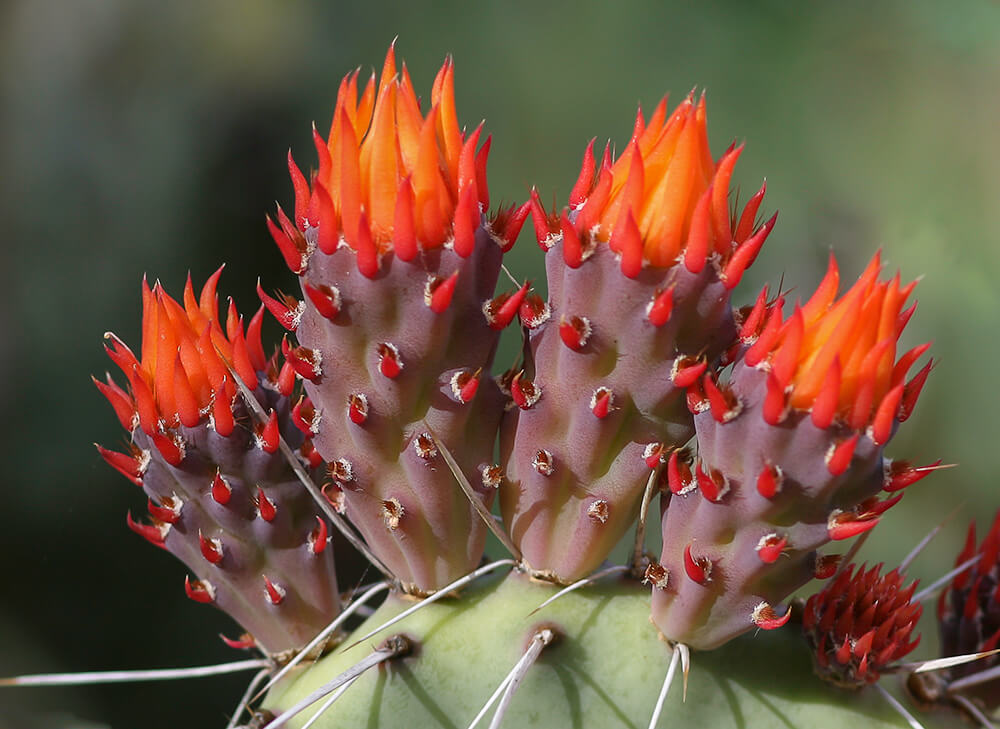
With its array of strange textures and alluring colors, the Arizona Garden is a great place for writers, artists and photographers to practice their craft. The garden is a frequent backdrop for family photos as well as wedding and graduation portraits.
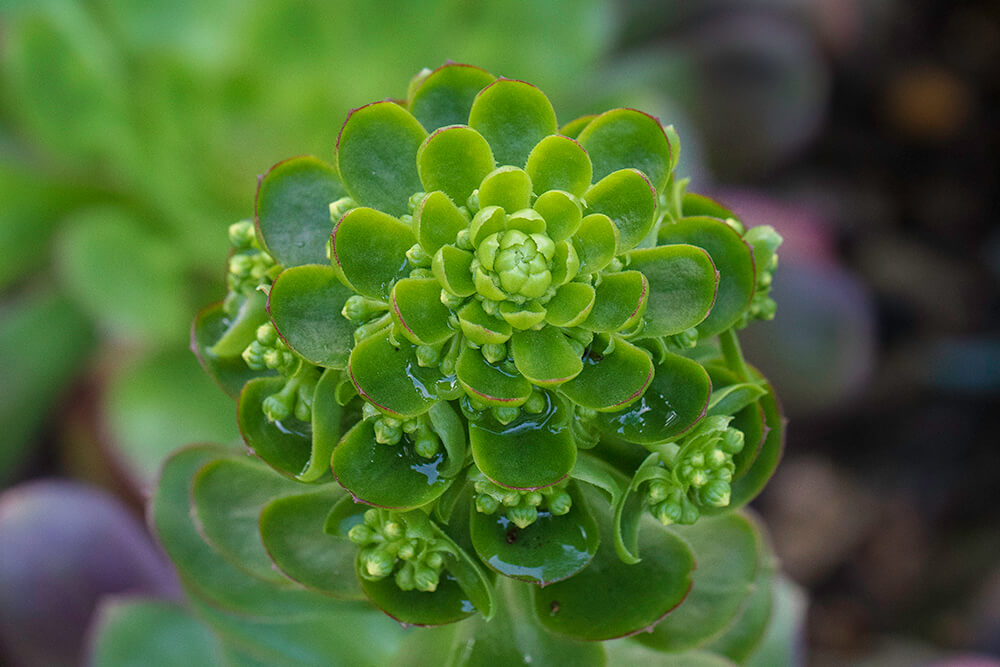
The different shapes and forms in the garden reflect a variety of adaptations to arid or xeric environments. Unlike the cactus family (Cactaceae), whose spines are degenerate leaves, plants in the agave (Asparagaceae) and stonecrop (Crassulaceae) families—depicted here—have fleshy, compact leaves to minimize water loss.
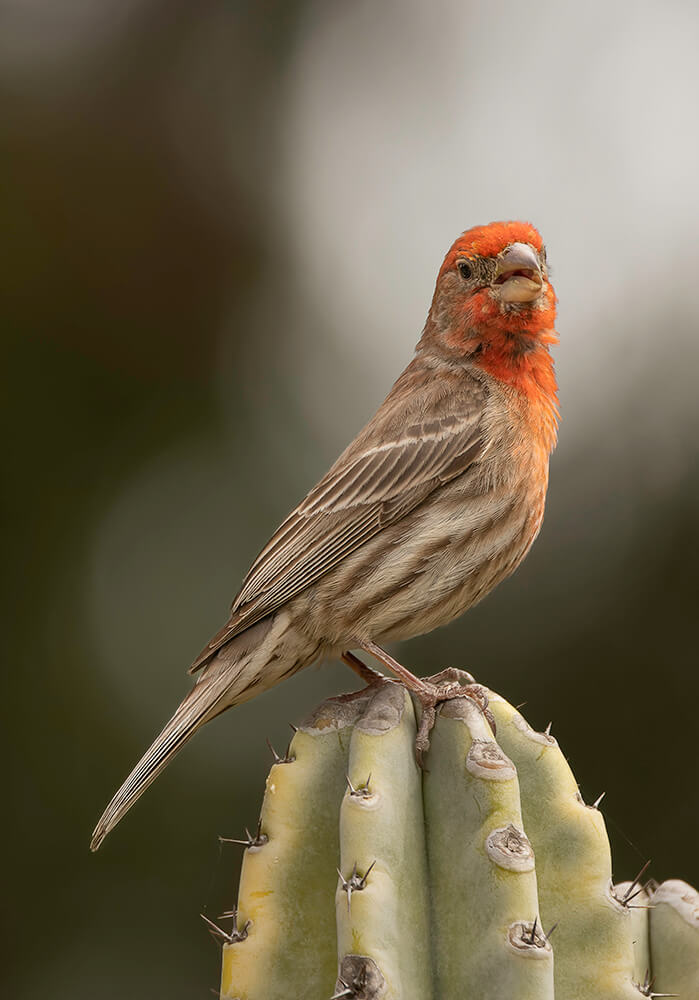
In the garden, various tribes within the cactus family can be distinguished by their shapes. The red color adorning the house finch seems to mimic certain cactus flowers. The endangered golden barrel cactus (opposite) is sardonically described as “Mother-in-Law’s Cushion.”
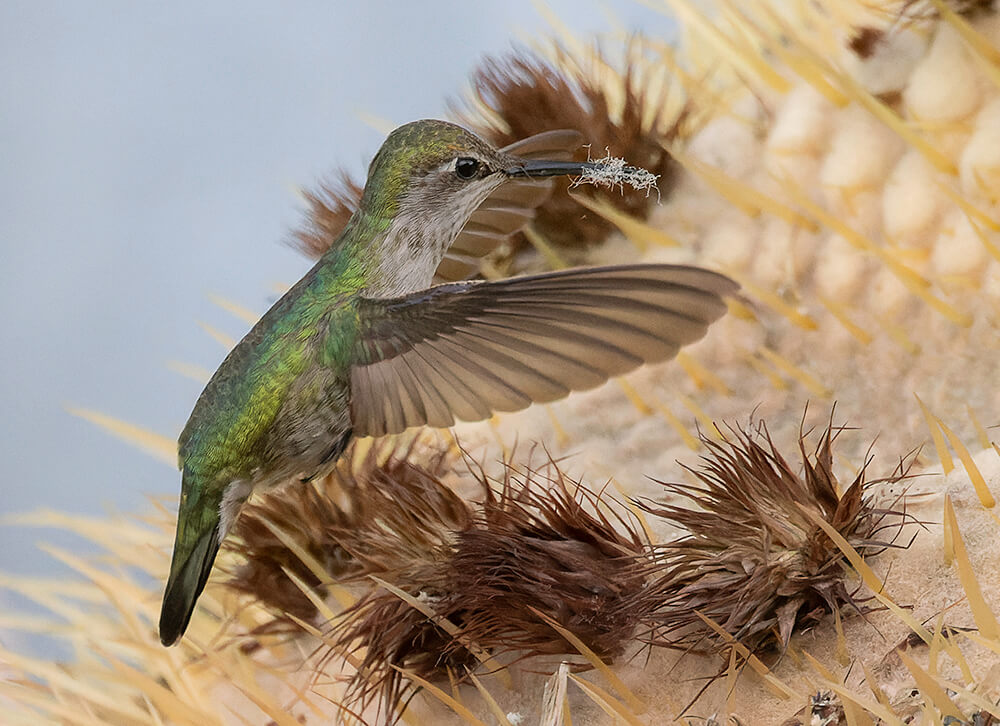
While many of the plants “make a point” of keeping herbivores at bay, the garden provides a home for birds, insects and other small creatures. In the case of Anna’s hummingbird and the Valley carpenter bee, there is mutual benefit with the plants providing pollination in exchange for nourishment and nesting materials.
In addition to being a microbiology and immunology professor at Stanford,
Robert David Siegel is a docent and avid wildlife photographer who teaches
courses in photographing nature. web.stanford.edu/~siegelr/photo


